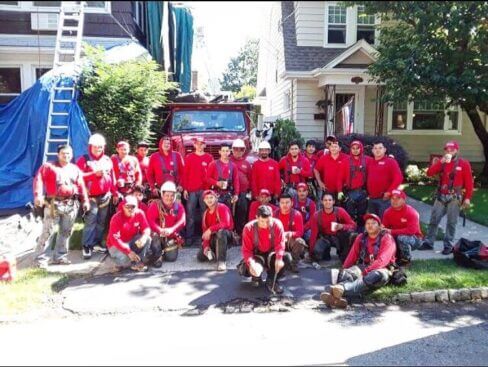
Flat roofs have grown beyond the traditional tar-and-gravel systems of decades past. Today's market offers a remarkable array of high-performance materials designed to address the unique challenges these horizontal surfaces face. Before investing in a new flat roof or upgrading your existing one, consulting with an expert roofer can help you navigate these innovative options and select the material best suited to your climate, building structure, and budget. Let's check the materials revolutionizing the flat roofing industry.
Leading the charge in modern flat roofing is TPO, a single-ply membrane that combines the durability of rubber with the heat-reflective properties of thermoplastics. This material has captured significant market share due to its impressive balance of affordability and performance. TPO membranes feature heat-welded seams that create a monolithic surface that is water resistant than traditional adhered seams. The bright white surface reflects solar radiation, potentially reducing cooling costs by 25-30% in warm climates. With lifespans reaching 20+ years and prices typically 10-15% lower than comparable single-ply alternatives, TPO represents exceptional value for budget-conscious property owners.
Polyvinyl chloride (PVC) membranes offer extraordinary chemical resistance and waterproofing capabilities, making them ideal for restaurants, laboratories, and industrial buildings where grease or chemical exposure presents concerns. These systems have great durability, offering 25-30 year warranties. The latest generation of PVC roofing includes enhanced plasticizers that resist brittleness and maintain flexibility even after decades of UV exposure. Some variants incorporate biocides that prevent algae and mold growth, particularly valuable in humid regions. While carrying a premium price point (typically 15-20% higher than TPO), the extended lifespan and superior chemical resistance often justify the investment for appropriate applications.
Traditional modified bitumen systems have undergone remarkable innovation with the integration of self-healing polymers and temperature-responsive technologies. These advanced materials contain microcapsules that release repair compounds when damage occurs, effectively sealing minor punctures and cracks without human intervention. While carrying premium pricing, these intelligent roofing systems offer exceptional durability with reduced maintenance requirements, potentially lowering lifetime ownership costs.
Living roof technologies have advanced dramatically with engineered growing media that weigh 60-70% less than conventional soil while better supporting plant life. These sophisticated substrates combine recycled materials, mineral aggregates, and organic matter in precisely calibrated ratios to balance water retention, drainage, aeration, and weight considerations. Modern green roof systems can be installed with modular trays for easier future access to the underlying waterproofing membrane, addressing a historical challenge of vegetation-covered roofs.
The innovative materials transforming today's flat roofing market offer unprecedented opportunities to customize your roof's performance characteristics to your specific needs.
To determine which cutting-edge solution best addresses your priorities—whether longevity, energy efficiency, environmental impact, or budget constraints—reach out to a qualified roofing contractor at 183 Bridge St Brooklyn, NY 11201 (718) 690- 9422 https://downtownbrooklynroofing.com specializing in commercial and residential flat roofs.
